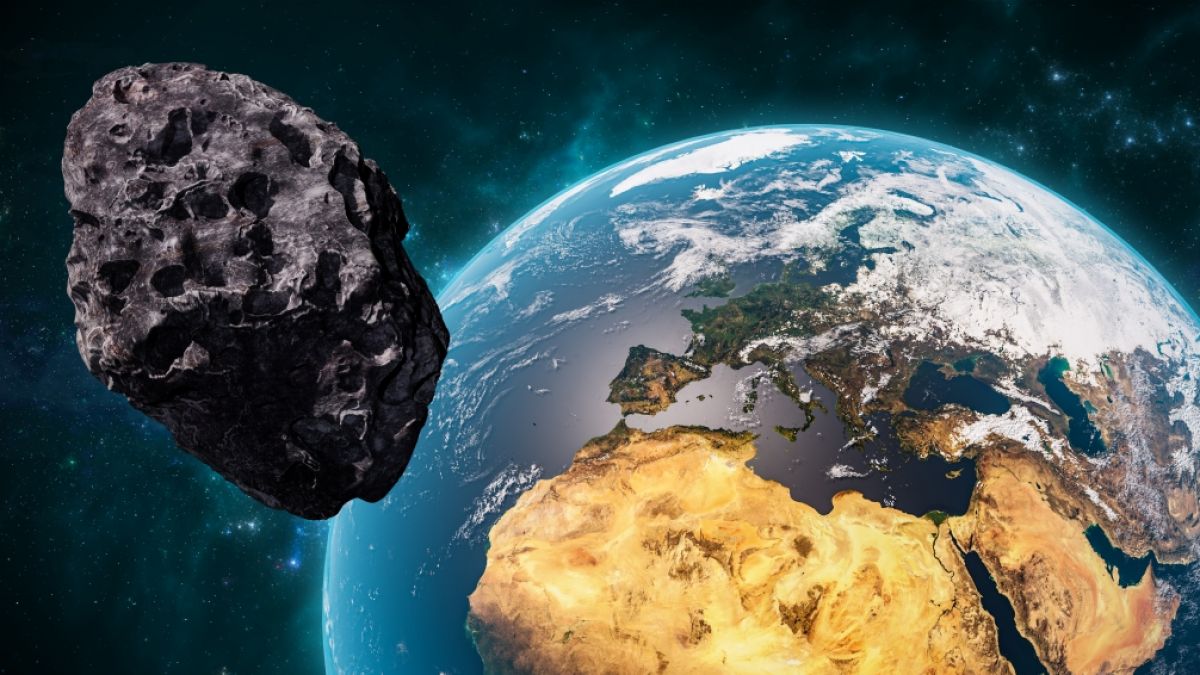(2023 JG6) “Especially getting close to Earth!” A total of 10 near-Earth asteroids reach the closest point in their orbit today. An overview of the largest asteroids currently near Earth and potential hazards.
What are the asteroids close to Earth today? Image: Adobe Stock/Matthieu
NASA is currently aware of the existence of more than 1.1 million asteroids. Thousands more are discovered each month. Particular attention is paid to the so-called near-Earth asteroids, which do not move around the Sun like most asteroids in the asteroid belt, but approach the Earth’s orbit and therefore can also be dangerous for the blue planet. In this article, we give you an overview of all the near-Earth asteroids that have reached the closest point in their orbit today.
On Tuesday, June 27, 2023, a total of 10 asteroids will reach their closest station during the day, including one potentially dangerous asteroid.
The largest asteroids close to Earth today
(2011 ED78) With an estimated diameter of 540 to 1208 meters, it is currently the largest near-Earth asteroid. (2011 ED78) “It makes its closest approach to Earth today at 12:23 PM. It is the second largest near-Earth asteroid (2023 DA3) Its diameter is estimated from 263 to 589 metres. “441987 (2010 NY65)” Today it ranks third among the largest near-Earth asteroids (143 m – 319 m).
This asteroid is particularly close to Earth today
The closest thing to Earth today is an asteroid (2023 JG6). It will approach our planet at 4:12 pm at a distance of 9.6 million km.
The asteroid closest to us so far without hitting Earth was “(2020 QG).” On August 16, 2020, it flew over the Earth at a speed of about 44,000 km/h, just 3,000 km away. Coming from the direction of the sun, experts didn’t see it coming: It was spotted just 6 hours after it flew by. It probably wouldn’t have caused much damage on the ground even if it had crashed. Due to its small size, only 3 to 6 meters in diameter, it is assumed that it would have burned up in the atmosphere if it had come close.
Potentially dangerous asteroids near Earth today
Potentially hazardous asteroids are those that are closer to Earth than 0.05 AU (about 7.5 million km) and have an absolute brightness of 22 mag or less. It is therefore considered large enough (at least about 140 meters in diameter) to cause significant damage in the event of a collision. About 20 percent of near-Earth asteroids are classified as hazardous.
Today there is only one potentially dangerous asteroid near Earth: “441987 (2010 NY65)”.
441,987 (2010 NY65)
First note: 14/7/2010
Last note: 7/22/2022
Absolute size: 21.35 mag (dim)
Estimated diameter: 143m to 319m
Distance: 13.5 million km
Speed: 53,246.26 km/h (14.79 km/s)
The time of the shortest distance to Earth: on 06/27/2023 at 20:25
6 cruisers orbited near the Earth
Asteroids that cross Earth’s orbit are also called orbit cruisers. Asteroids of the near-Earth type Apollo Crossing the Earth’s orbit from the outside, asteroids of the near-Earth type I come Crossing the Earth’s orbit from the inside. Today, a total of 6 Earth orbit cruisers are approaching our planet.
-
Apollo asteroids near Earth today: “441987 (2010 NY65)”, “(2018 LD3)”, “(2023 KN4)”
-
Near Earth Aten asteroids today: “(2017 HZ)”, “(2018 LS3)”, “(2015 MT200)”
Asteroids of the Amur and Atera types do not cross Earth’s orbit. While it is difficult to detect AteraAsteroids move entirely within Earth’s orbit, and are approaching asteroids Cupid Earth’s orbit from the outside.
- Age asteroids near Earth today: “(2011 ED78)”, “(2020 MC)”, “(2023 DA3)”, “(2023 JG6)”
Profile of all near-Earth asteroids today
| family name | distance | measuring | Speed | He writes | A date close to Earth |
|---|---|---|---|---|---|
| (2023 GG6) | 9.6 million km | 52-115 AD | 28,521 km / h | Cupid | 06/27/2023 at 16:12 |
| (2018 LS3) | 10.2 million km | 22-49 AD | 26,989 km / h | I come | 06/27/2023 at 11:38 PM |
| (2023 KN4) | 12.2 million km | 37-83 AD | 33324 km / h | Apollo | 06/27/2023 at 7:27 PM |
| 441,987 (2010 NY65) | 13.5 million km | 143 – 319 AD | 53,246 km / h | Apollo | 06/27/2023 at 8:25 PM |
| (2018 LD3) | 14.3 million km | 51-113 AD | 49,362 km / h | Apollo | 6/27/2023 at 1:52 PM |
| (2015 MT200) | 32.6 million km | 71 – 159 AD | 34,519 km / h | I come | 06/27/2023 at 5:10 p.m |
| (2020MC) | 33.7 million km | 44-99 AD | 10,587 km / h | Cupid | 06/27/2023 at 07:08 |
| (2011 ED78) | 37.8 million km | 540 – 1208 AD | 22847 km / h | Cupid | 06/27/2023 at 12:23 PM |
| (2017 Hz) | 60.7 million km | 11-24 pm | 60,204 km / h | I come | 06/27/2023 at 4:20 PM |
| (2023 DA3) | 60.9 million km | 263-589 AD | 51,880 km / h | Cupid | 6/27/2023 at 4:41 am |
+++ Editorial note: This text was automatically generated based on current data from NASA. If you have any comments or questions, please contact zettel@news.de. +++
He follows News.de already in Facebook And Youtube? Here you will find the latest news, the latest videos and the editors’ direct line. To keep up with all the news about astronomy and space travel, we also recommend Astro and the space news ticker on twitter.
ROJ / news.de

“Total coffee aficionado. Travel buff. Music ninja. Bacon nerd. Beeraholic.”








More Stories
Coral Seeding: Artificial Insemination Makes Coral More Heat Tolerant
Fear, Anger, and Denial: How People Respond to Climate Change – Research
LKH Graz: Using radiation to combat heart arrhythmias